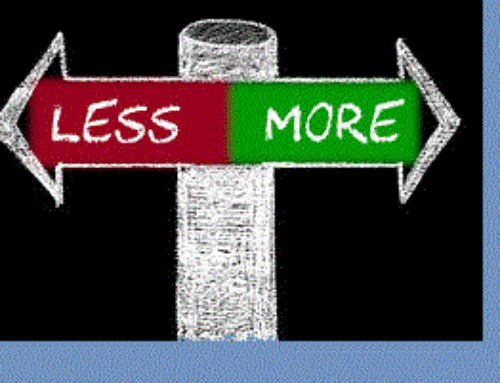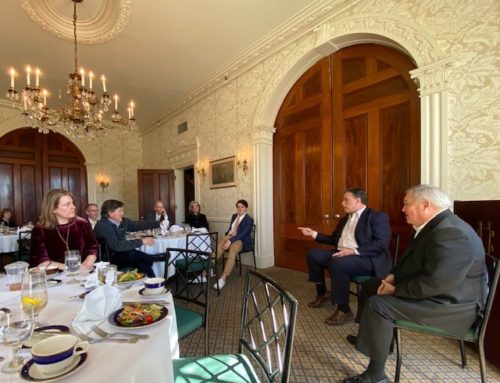Economist Robert Barone considers the state of the market moving forward. Have a look at this commentary, as seen in Forbes – it’ll be worth your time!
Surely, this was a December to remember, but due to financial pain, not joy.
Prior to December, markets were uneasy, and this showed up in a downward pricing bias and significantly increased volatility. As measured by the intraday swings on the Dow Jones Industrial Average (DJIA) between high and low [(high-low)/prior close], volatility more than doubled between September (0.67% per day) and October (1.55% per day), as markets became concerned over slowing domestic and international growth. November continued October’s concerns (1.42% per day). But, when December rolled around, markets became highly schizophrenic with daily market swings averaging 2.53% . In this period, there were 5 sessions where the swings were 3.25% or greater with one day showing up with a 5.35% intraday swing (the record up-day of 1,086 points). To show the impact of computerized trading on market volatility, in the last minute of the December 31, 2018 session, the DJIA rose about 140 points!
Market to Fed: “Pause” OR ELSE
At December’s outset, and in anticipation of the Fed’s mid-December meeting, the markets began sending a message to the Fed: “it’s time to pause – OR ELSE.” As seen in the Fed Funds futures market, as the Fed meeting approached, the betting line went from a 90%+ odds of a rate hike to a 70% chance as the meetings commenced. That is an unusually large move, especially since the Fed had given “forward guidance” that a rate hike was baked in. Markets, however, were reading the economic numbers. “Surely,” it thought, “the Fed won’t be ignoring those!” The worst-case scenario on anybody’s radar was a “dovish” rate hike, meaning that while they moved rates up a notch, the “forward guidance” in the official statement and in the press conference would indicate the Fed’s perception that they were near the end of the hiking cycle.
The Real Surprise
So, the rate hike, itself, wasn’t a surprise. What was a surprise was the hawkish language in the official statement and at the press conference, with Jerome Powell, the Fed’s chairman, discussing how strong the economy was and the expectation that strength would continue. In the four sessions following the rate hike, the market’s tantrum worsened, with the DJIA falling a total of 1,883 points, more than doubling its 1,863 point fall in December to that point.
Fed to Trump: “Back-Off!”
We know from their public speeches that there are several dovish FOMC members who had publicly discussed their desire for a rate “pause” or even rate reduction. Yet, Chairman Powell said that the vote to raise rates was “unanimous.” I can’t help but think that the Fed, in the face of incontrovertible evidence of both domestic and international economic slowing, also acted like a petulant child, sending President Trump a message (i.e., “back-off”). It appears that there was some off the record discussion, either formally or informally, that a “unanimous” vote to raise rates (since the majority was for a rate hike anyway) was the best way to send the President that message.
Fed & Markets: Different Pages
The markets and the Fed appear to be on different pages when it comes to an assessment of the state of the economy. In the press conference, Powell referred to the economy as “very healthy.” In reference to the market’s downward movement and volatility, Powell said that “these developments have not fundamentally altered the outlook,” meaning consumer confidence had not been negatively impacted by market action.
Powell also characterized the reduction in the Fed’s balance sheet (currently $50 billion/month), called Quantitative Tightening (QT), as on “auto-pilot.” When the Fed reduces its balance sheet, it drains liquidity from the financial system which is thought to play a large role in market price action. Markets wanted to hear that the Fed would consider, at least temporarily, suspending QT operations, but, once again, Powell disappointed.
December’s Children
Here is a my interpretation of December’s important interactions:
- The President whines about rising interest rates in an attempt to influence (some say “bully”) the Fed (don’t forget, Trump was in real estate where lower rates are always better);
- The markets believed that, if they threw a child-like temper tantrum, they could influence the Fed’s decision. After-all, such behavior had successfully influenced the Fed for the past 20 years. So, in the child-like mind of the market, why would this time be different? (Note: if one viewed market reaction as a temper tantrum, then the 1,086 point rebound on the day after Christmas could have been anticipated, as the petulant child reassess the situation); and
- The Fed, itself, sent its own teen-like message back to the group at school that it wasn’t going to give in to the bully’s demands and has cancelled the party until further notice.
Hard Data
The hard data are inescapable. In Europe, the economies of Germany, Italy, Sweden, Switzerland, and Lithuania all contracted in Q3. Considering the slower pace of trade (tariffs), Italy’s debt issues, French riots, and the economic issues surrounding a hard Brexit, it wouldn’t be a surprise if Q4 turned out worse. Yet, in the face of this, the European Central Bank (ECB) stopped its bond buying program in December! This, in conjunction with the Fed’s QT, will continue to drain liquidity and cause even more equity market volatility.
Data out of China continue to worsen. The December manufacturing index there was below 50, the demarcation between growth and contraction. Over the past 10 years, China has been the world’s major consumer of raw materials. Weak commodity prices and contracting commodity exports to China tell us a lot about the state of that economy.
In the U.S., while Q3 GDP growth was 3.4%, much of this was due to inventory accumulation to avoid announced tariffs. There was only 1% growth in real final sales. By every measure, U.S. housing is heading for recession. And Q4 GDP growth appears to be 2.5% at best, even with robust holiday sales. Almost every economic measure shows deceleration with recent Fed surveys confirming those trends.
Last year’s corporate tax cuts were used for share buy-backs and dividend payouts, a scenario not likely to be repeated in 2019. The hoped-for growth in capex, due to the tax cuts, fizzled mid-year, and all of today’s regional Fed manufacturing indexes are soft.
Policy Mistakes
According to markets and in the minds of some economists, the Fed has already made policy mistakes, and a recession may already be locked in. In his December 28th daily missive to his subscribers, Wall Street Economist David Rosenberg indicated that with rate hikes and QT counting for an estimated 325 basis points (3.25 percentage points) of a de-facto tightening, “the only thing separating the recession call from becoming a reality is the inherent lag between monetary policy actions” and their impact on the economy. Just a matter of time, according to Rosenberg.
Needed Critical Action
Whether or not a recession actually develops, the critical action will be a Fed policy “pause” or outright policy reversal. The timing and magnitude of such action is critical. Unfortunately, the Fed only has 250 basis points of rate easing in its quiver. In past recessions, it had a lot more. So, likely it will have to stop QT and re-resort to QE (Quantitative Easing, i.e., the outright printing of money). Let’s also remember that the Federal government, too, has little ammo in that they are already running huge budget deficits. So, policy alternatives are lean.
Conclusion
The sooner the Fed reverses course or “pauses,” the better. Markets will respond positively to such actions. The optimist in me says this will occur sooner (1st quarter) rather than later. But, the longer they wait (or if they pursue further rate hikes and a continuation of QT), the worse it will be, both for Wall Street (markets) and for Main Street (the economy).
-Robert Barone, Ph.D.





